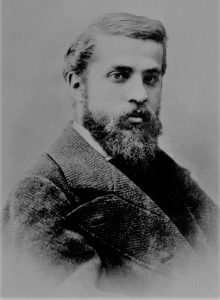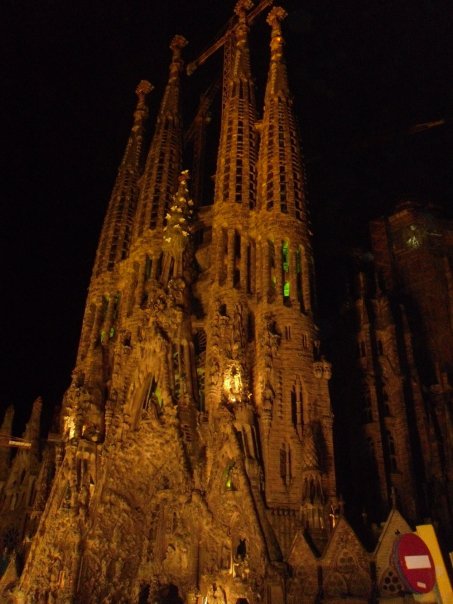Antoni Gaudi, better known as Antoni Plàcid Guillem Gaudí I Cornet. Catalan architect who pioneered the Art Nouveau movement in Spain. He is the creator of the most famous architectural works of the city of Barcelona.
 Antoni Plàcid Guillem Gaudí a.k.a Antoni Gaudi
Antoni Plàcid Guillem Gaudí a.k.a Antoni Gaudi
He was born on June 25, 1852, in the city of Reus, in the Catalonia region of Spain. Gaudí, the son of a copper master, completed his architectural education, which he started in 1869, in eight years for military service and various reasons. The city of Barcelona, where he completed his architectural education in 1878, became the center of all his artistic activities and had a great place in the development of his personality. That period was a period when the middle class got stronger, and wealth and urban development increased, especially with the development of the textile industry in Barcelona. Gaudí was influenced by the ideas of the French architect Eugene Viollet-le-Duc and the English thinker John Ruskin, who said that “ornamentation is the source of architecture”. Over time, it went beyond the dominant historical styles of the 19th century, creating its unclassifiable aesthetic.
His first work was Casa Vicens in Barcelona
His first important work was the summer house Casa Vicens in Barcelona, which he built between 1883 and 1888 for the Vicens family. Later, he established a strong relationship with the industrialist named Eusebi Güell and gained prestige in Barcelona with the works he made for this family. These works are Güell Pavilion, Güell Palace, Güell Cellar, Colonia Güell Tomb and Güell Park. Other notable works include Teresano College, Velvet House for which it won the building of the year award, Bellesgurad Villa, Battlo House, and Casa Milà, known as La Pedrera.
 The Basilica of La Sagrada Familia
The Basilica of La Sagrada Familia
His most famous work is the basilica of La Sagrada Familia, to which he devoted his life and which is still under construction. Antoni Gaudi completed this church in 1883, which was begun by Francesc de Paula Villar y Lozano in 1882. Devoting more and more of his time to this work, Gaudí stopped taking on other projects in 1908 and worked only on La Sagrada Familia until he died in 1926. Gaudi desired to create a 20th-century cathedral by combining all his architectural knowledge with a complex system of symbols and visual explanations of the mysteries of faith. He devoted all his energy to the work and moved his studio to construction. He died in a traffic accident on June 7, 1926, at the age of 73, before he could complete his project and was buried in La Sagrada Familia. On June 7, 1926, Gaudi was hit by a tram as he was walking to view his near-finished work, La Sagrada Familia, from the church of Sant Felip Neri. He was mistaken as an unemployed homeless beggar because he did not have identity documents in his pocket and wore shabby clothes, and at first, he could not get emergency help. Lying motionless on the ground, some passers-by noticed him and took him by taxi to Santa Creu Hospital, where first aid was given but Gaudí’s condition worsened due to the delay in treatment. Gaudí died on June 10, 1926, at the age of 73, and was buried two days later. There was a large crowd at his funeral. His tombstone bears the following inscription: Antoni Gaudí Cornet, 74 years old, was an exemplary man of life and an extraordinary master. He died devoutly in Barcelona on the tenth day of June 1926; henceforth the ashes of such a great man await the resurrection of the dead. Rest in peace.
Eight of Gaudí’s works are on the UNESCO World Heritage List. Park Güell, Palau Güell, and Casa Milà were inscribed on the UNESCO World Heritage List in 1984, La Sagrada Familia’s “Nativity” façade and the underground shrine, Casa Vicens, Casa Battlo and Colonia Güell Tomb in 2005.
In 1908, Gaudí received a proposal from two American entrepreneurs to build a hotel in New York and designed a 300-meter-high building. However, this project did not materialize due to Gaudí’s long-term illness between 1901 and 1910 debilitated the artist. Gaudí’s project was proposed to be implemented for the building to be built on the site of the World Trade Center, which was destroyed on September 11, 2001.
Since 2013, the day of Antonio’s death, June 10, is celebrated as World Art Nouveau Day in his memory.
Bir yanıt yazın